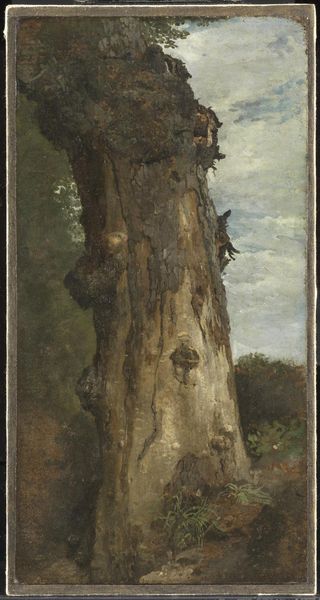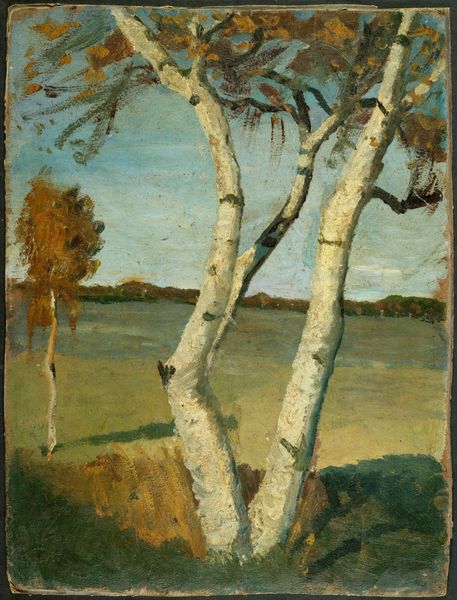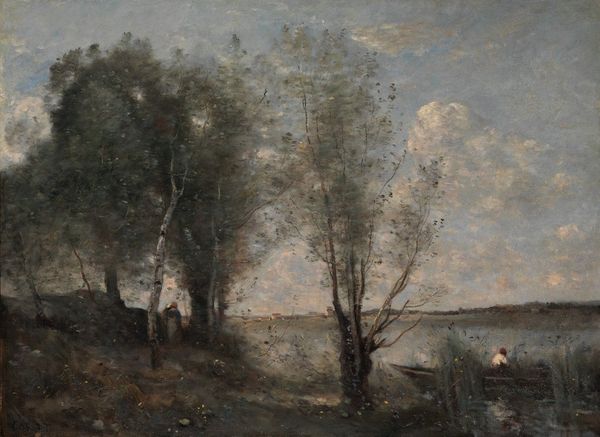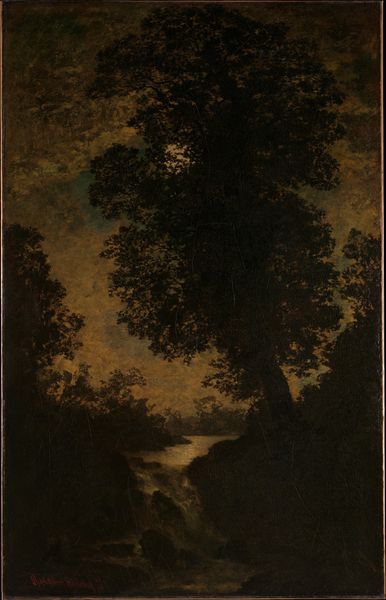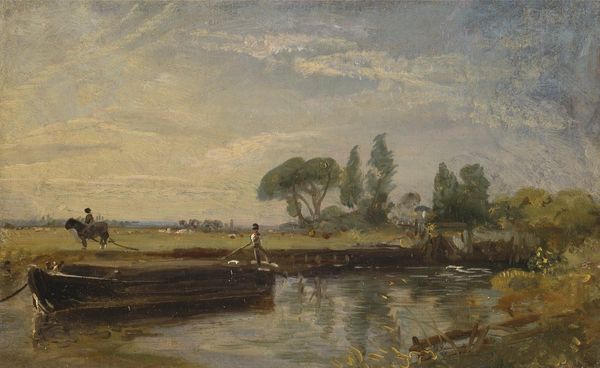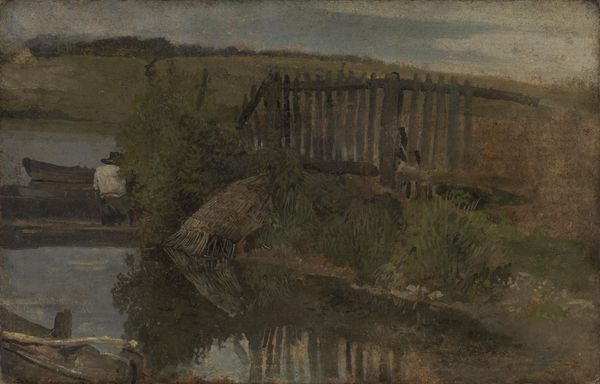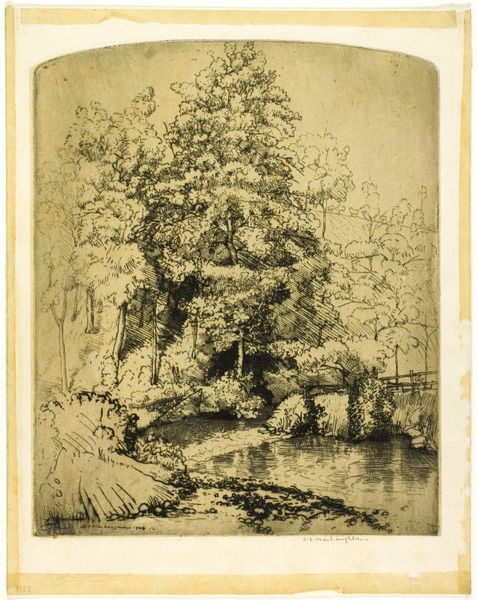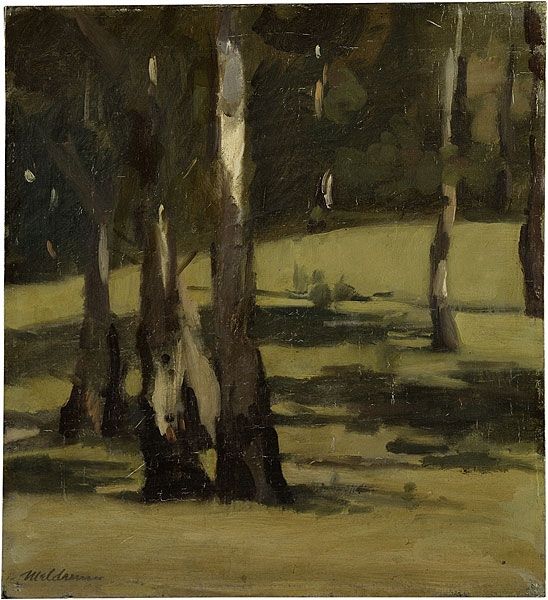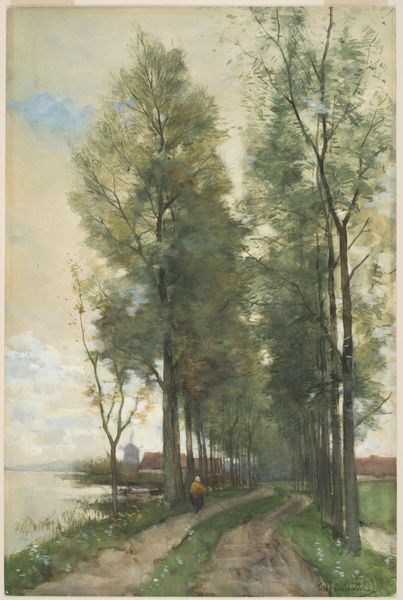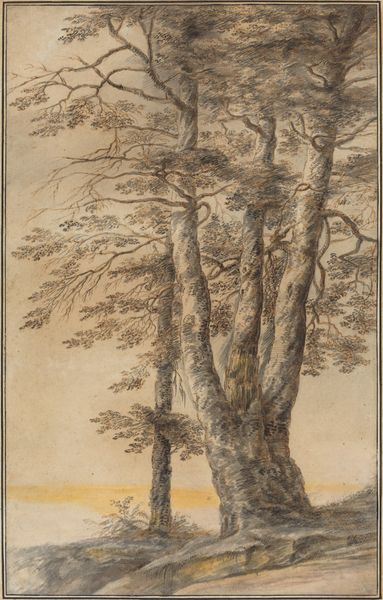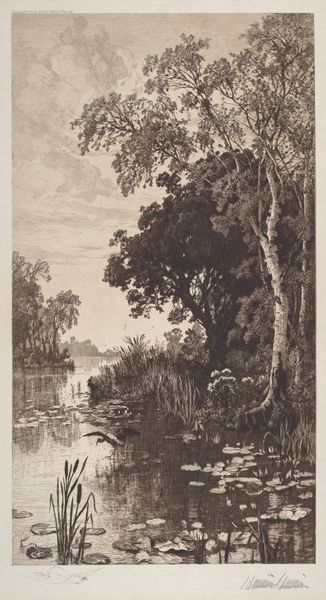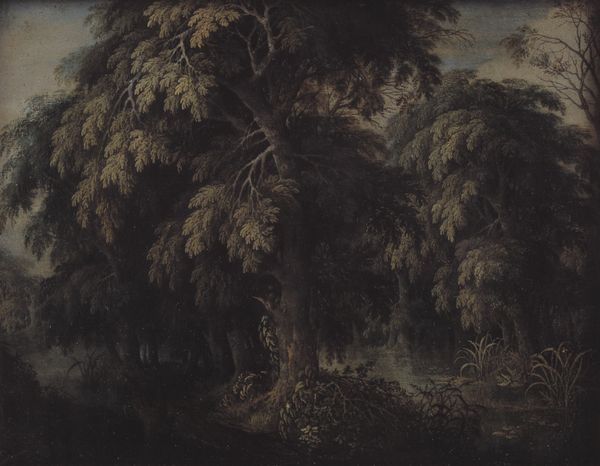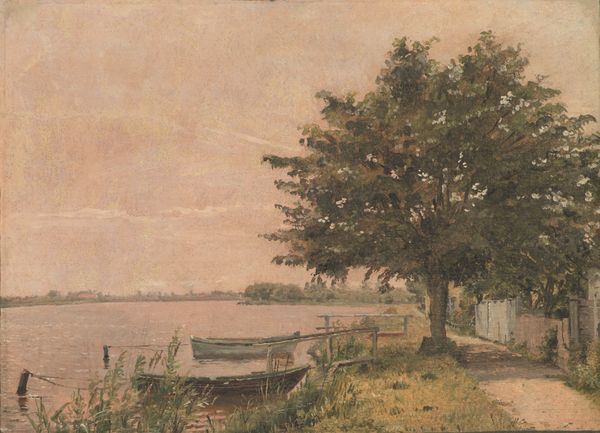
Dimensions: support: 330 x 168 mm frame: 485 x 315 x 39 mm
Copyright: CC-BY-NC-ND 4.0 DEED, Photo: Tate
Curator: William Henry Hunt's "Study from Nature at Twickenham" presents a tranquil waterside scene, dominated by a large tree. It resides here at the Tate Collections. Editor: It's such a melancholic piece, isn't it? The muted tones and the solitary boat create a sense of isolation and perhaps even longing. Curator: Precisely, the lack of distinct figures points to the sublime, common during its time. Hunt's focus was less on picturesque charm and more on capturing a specific mood evoked by the natural world, perhaps relating to the socio-political tensions of his era. Editor: I see the tree as a silent witness. What did the artist intend by placing it so prominently? Curator: That's the question, isn't it? This particular tree, rooted by the water, could be seen as a symbol of resilience amid social change. Editor: This artwork really invites us to consider the complexities of nature's role within society, and how these have changed through time. Curator: Yes, it's a fascinating work that provides much to explore.
Comments
tate 4 months ago
⋮
http://www.tate.org.uk/art/artworks/hunt-study-from-nature-at-twickenham-t01154
Join the conversation
Join millions of artists and users on Artera today and experience the ultimate creative platform.
tate 4 months ago
⋮
Like Linnell, Hunt was apprenticed to John Varley in 1806, and joined him in oil-sketching expeditions at Twickenham. This study of a riverside tree is typical of the humble subjects they chose when sketching outdoors at this date, but is more fluid in its handling than Linnell's examples. Hunt's subsequent career as a watercolourist was to lead him into a different branch of naturalism: his studies of flowers, still life and his popular paintings of birds' nests have a Pre-Raphaelite intensity of detail far removed from the impromptu feeling of this sketch. Gallery label, September 2004
